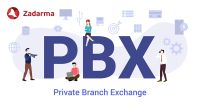Statistics show that in 2019 the number of calls made by existing and potential customers to businesses worldwide will reach 162 billion. Moreover, compared to leads generated online, calls tend to convert to actual sales 10-15 times more often. The number of businesses with the share of "telephone" sales beyond 30% is still very high.
All these facts lead to complications as modern tools for analytics are focused on studying the behavior of potential customers on the company's website. Many of these tools are lacking offline conversion-tracking capabilities. So, it is hard for the company to assess its marketing and ad channels to determine which of them are paying off and which simply increase the volume of useless phone calls.
To solve this issue, call-tracking technology is used. Let's talk about how it works, what the common mistakes can be while implementing it, and how these mistakes can be avoided.
What is call tracking?
Call tracking is a tool for tracking telephone inquiries and matching them to a specific marketing source, for example, the internet. Simply put, it is used to understand how many calls a particular ad has generated.
Usually, the algorithm looks as follows:
- The user visits the company's website.
- A unique phone number is assigned to him or her.
- If the user decides to make a phone call, the call-tracking system will be able to match the call with the user profile using the previously assigned number.
Types of call tracking
There are two types of call tracking – static and dynamic. In the first case, a dedicated phone number is assigned to every marketing channel, making it possible to use this type of call tracking for analyzing offline ads (banners, leaflets and commercials).
When dynamic call tracking is used, a phone number is assigned to the website session. Each user sees a specific number which is handy for tracking lead-related info such as time spent on the website, as well as the ad campaign and keyword that brought the user to the site.
How to make your call tracking effective: 3 practical tips
Here are 3 simple tips that will help you to increase overall call-tracking efficiency.
Group-related marketing channels
Quite often companies use several yet similar traffic-acquisition channels like offline banners, UTMs in online postings, etc. To get the full picture regarding performance, it is better to combine these into groups. This will let you know how entire groups of marketing channels work.
Use smart number reservations
Very often a potential customer does not call immediately after arriving at the website. He or she might read the information, compare different options, and call after a period of time. To correctly account for such users in the call-tracking system, you need to use a session duration feature. This reserves the number for a user for a specific amount of time.
For example, if the number is reserved for 45 minutes, and the user decides to call 30 minutes after they arrived at the website, this call will be processed by the call-tracking system. The more significant session-duration period you choose, the more accurate the call tracking will be that is performed.
Time slots for number reservations can be set up depending on the business's industry. For example, for food delivery or taxi bookings, session duration is usually quite short, as people go to the website to order the service right away. If you sell more complicated goods or services, it may take people longer to decide on the purchase. So, you might need to give the user more time and keep the number reserved.
Make call tracking more powerful with integrations
In order to extend its capabilities, using call tracking alongside other software can be an excellent option. For example, the Zadarma call-tracking engine is integrated with dozens of tools including free PBX, popular CRMs ( ZohoCRM, Salesforce, etc.), and messaging apps (Slack, Telegram, Facebook Messenger).
CRM integration enables more effective data analysis; messaging apps could be used to display important alerts: for example, concerning missed calls.
Common call-tracking mistakes
Despite the efficiency of call tracking as a technology, its implementation may not be that simple. Businesses often make mistakes which negate the potential benefits. Let's focus on several common pitfalls:
1. Too few numbers for the call tracking
This is one of the most common mistakes. In an attempt to save money, the company purchases too few virtual numbers. This results in the call-tracking system's inability to assign all potential customers a unique virtual number when the spike occurs.
2. Inaccurate settings
In the case where your call-tracking module setup lacks accuracy, this may result in the collection of incorrect data, and errors in its interpretation. For example, quite often businesses experience the situation where the system flags a high number of missed calls. Stat shows that 85% of users whose call was missed won't call back, and will be completely lost to the company. This is why companies try to monitor this critical metric, as the number of missed calls tells a business a lot about its sales reps’ work.
However, in reality, it might turn out that during the call tracking setup someone forgot to setup working hours for monitoring or forgot to exclude calls with a short wait period. As a result, calls received when there were no employees on the phone were marked as missed, as were bot-generated calls with the wait time of a couple of seconds. The number of calls lost due to the fault of sales reps may turn out to be minimal.
3. Using the number of calls as a key KPI
Lots of top managers think that if an ad campaign generates calls, this is a good campaign. Not necessarily so. Your advertising may bring a lot of non-targeted calls, and if this is the case, then the company is wasting its ad budget and resources on serving leads that have minimal conversion potential.
To avoid this, you need to integrate your call-tracking system with the CRM and use call tags. This means that after each conversation the rep logs in the "value" of the call. Such an approach allows the identification of marketing channels that bring bad leads and the optimization of your spending on customer acquisition.
Final thoughts
Current stats convincingly bust the myth of "nobody's calling companies nowadays". Conversely, customers are more and more actively engaging with companies via the telephone. Such contact results in a much bigger chance of converting to a real sale.
To make this revenue-generation channel even more effective, you need a call tracking system. This technology will allow you to identify the most effective sales channels, get more hot leads, and optimize your marketing budget. Moreover, you can get it at no cost, as call tracking from Zadarma is free.
 Calls
Calls
 Phone numbers
Phone numbers
 eSIM for Internet
eSIM for Internet
 SMS
SMS
 Business Phone System
Business Phone System
 Speech analytics
Speech analytics
 Callback button
Callback button
 Video conferencing
Video conferencing
 Click to call button
Click to call button
 VoIP for Business
VoIP for Business
 Become a partner
Become a partner
 Integrations
Integrations
 For whom
For whom
 Setup guides
Setup guides
 FAQ
FAQ
 Online chat
Online chat
 Contact support
Contact support
 Blog
Blog












